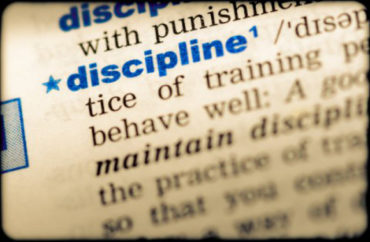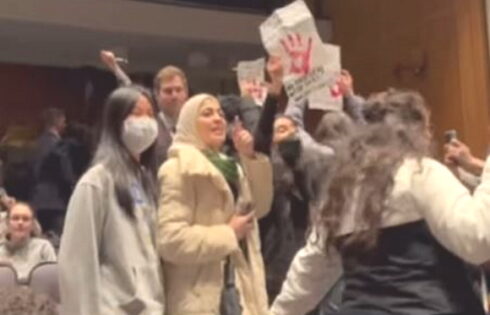
The bane of “racial proportionality,” which in many ways personified the Obama administration, continues to burden school districts across the country.
Over the last decade, school officials have loosened the “discipline grip,” so to speak, out of fear their schools’ racial percentages may not be viewed as “correct” by government bureaucrats.
Ironically, it’s that very reliable Democratic voting bloc — teachers — which have borne the brunt of this slackening, which no doubt explains why even they frowned upon the previous Department of Education’s race-based “discipline” measures.
Take a recent story from Harrisburg, Pennsylvania: City schools have lost almost four dozen teachers since July due to what they deem as “an unprecedented level of misbehavior among children”:
Some of the worst behavior has come from some of the district’s youngest students. Amanda Sheaffer, a first-grade teacher in the district for four years, described the bad behavior she has seen.
“I have been hit, I have been kicked, I have been restrained from behind where I’ve been unable to move my arms,” she said. “It really throws off the whole day. I mean, you have an incident happen and you have to do a room clear, get all the students out, and then after that you have to take the time to do the write-up, and you have to make sure security comes and gets the kids.”
In response, the district said (politically correctly) that “urban education is fraught with challenges, opportunities and experiences.”
That’s one way of putting it.
As chronicled by The College Fix over the past few years, the state of Minnesota has dealt with some of the worst examples of discipline becoming a victim in the “getting the numbers right” game. Indeed, discipline matters there are considered more of a “white privilege” and “cultural competency” issue — white teachers are educated on their inherent racism and how to manifest better relationships with minority students.
MORE: By a wide margin, teachers, general public are against race-based school discipline procedures
Now comes word that the Minnesota Department of Human Rights has sent out letters “informing” districts they may be in violation of the law because they’ve not attained “proper” racial discipline numbers.
In an email, the Center for the American Experiment’s Katherine Kersten notes that the Minnesota DHR is basing its warnings on the Minnesota Human Rights Act, the education section of which states
It is an unfair discriminatory practice to discriminate in any manner in the full utilization of or benefit from any educational institution, or the services rendered thereby to any person because of race, color, creed, religion, national origin, sex, age, marital status, status with regard to public assistance, sexual orientation, or disability, or to fail to ensure physical and program access for disabled persons.
So the DHR is automatically considering it “discriminatory” if a school’s discipline figures do not match those of surrounding demographics.
Kersten says several Minnesota state legislators have requested from the DHR a list of the districts that received letters, but have been denied.
Instead of buckling to the Department of Human Rights, the affected districts should challenge them based on the Seventh Circuit Court’s ruling in People Who Care v. Rockford Board of Education. That decision said that demanding racial proportionality itself is discrimination, and thus unconstitutional:
Racial disciplinary quotas violate equity in its root sense. They entail either systematically overpunishing the innocent or systematically underpunishing the guilty. They place race at war with justice. They teach schoolchildren an unedifying lesson of racial entitlements. And they incidentally are inconsistent with another provision of the decree, which requires that discipline be administered without regard to race or ethnicity.
(Ironically, this section of the decision cites Coalition to Save Our Children v. State Board of Education, which dealt with northern Delaware school districts getting out from under a 1978 federal court desegregation order. The Coalition to Save Our Children had made an argument similar to that of the Minnesota DHR, among others, regarding racial proportionality and school discipline. Yours truly attended schools in a district affected by the 1978 order, and then taught in the same district for 25 years.)
Alas, too, the United States Supreme Court itself has ruled that a “disparate impact” effect is not in and of itself unconstitutional, “only ‘intentional’ discrimination” is.
The Obama Department of Education’s contention that racial imbalances were the result of racist intention, Hans Bader writes, conflicts with the Supreme Court’s ruling in U.S. v. Armstrong:
[The Court] rejected the “presumption that people of all races commit all types of crimes” at the same rate, which is “contradicted by” reality. Blacks, who are only 13 percent of the population, commit nearly half of all homicides. The Education Department claimed there is no evidence of “more frequent” misbehavior by minority students. But the homicide rate is 10 times higher among black teens than white teens.
Here’s hoping the new Department of Education administration will reverse course — and quickly — on this politically correct foolishness.
MORE: What happens when you impose a radical (and racial) agenda in schools: The public revolts
IMAGE: Shutterstock.com
Like The College Fix on Facebook / Follow us on Twitter







Please join the conversation about our stories on Facebook, Twitter, Instagram, Reddit, MeWe, Rumble, Gab, Minds and Gettr.